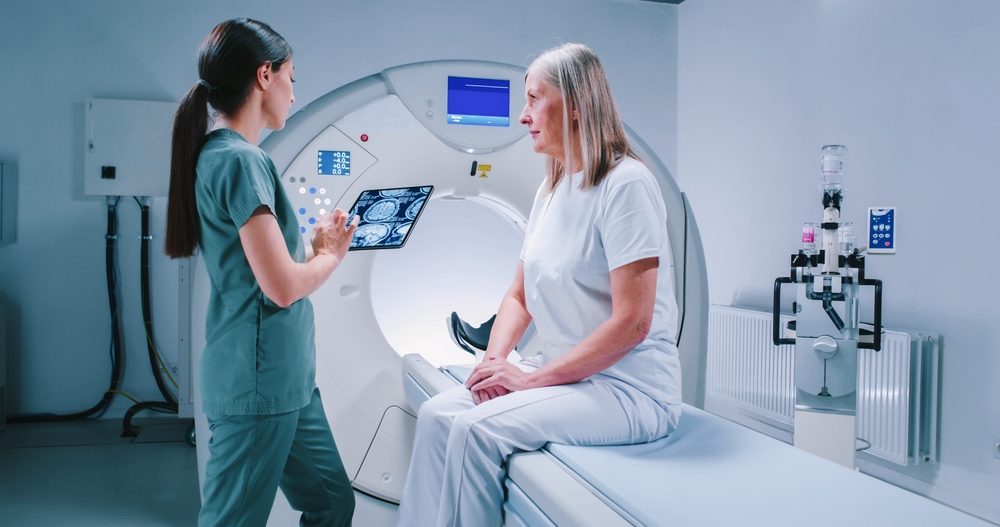Magnetic Resonance Imaging (MRI) is a groundbreaking tool that has revolutionized the way we diagnose and monitor various medical conditions. However, receiving your MRI results can be a source of anxiety. How do you know if there’s a reason to worry?
Understanding the ins and outs of MRI results can help alleviate your concerns and empower you to take the appropriate steps for your health.
Understanding MRI Results
An MRI report is a detailed narrative of your inner health, written in medical language. When your scan is complete, a radiologist interprets the images and compiles a report which includes:
- Anatomical Description: This section describes the size, shape, and structure of the scanned area. For example, if it’s a brain MRI, it will detail the appearance of various brain regions.
- Findings: Here, the radiologist notes anything that stands out from what’s considered normal. This could range from benign cysts to areas that might suggest inflammation or other concerns.
- Comparison with Prior Scans: If you’ve had previous scans, the report may compare them to the current images to track any changes over time, which can be crucial in understanding the progression or improvement of a condition.
- Conclusion or Impression: This is a summary of the findings, where the radiologist highlights the most significant aspects of the scan. It’s like the closing argument of the report, pointing out what needs attention.
Demystifying MRI Terminologies
MRI reports can often seem like they’re written in a foreign language. They’re packed with medical terms that can be baffling if you’re not familiar with them. Let’s break down some of these terms to help you understand the language of your MRI report:
- Lesion: This is a general term for an abnormal area. It could be something like a bruise, a tumor, or an area of infection. Lesions are not always cause for alarm, but they are areas your doctor will look at more closely.
- Mass: This word indicates a lump which could be anything from a cyst (a fluid-filled sac) to a solid growth. The report might not spell out exactly what the mass is, but it will be a point of interest for further investigation.
- Artifact: Think of this as interference or “noise” in your MRI images. Artifacts can be caused by metal in your body, movement during the scan, or even technical issues with the MRI machine. They can make it hard to read the scan accurately, so it’s important for the radiologist to recognize them.
- Signal Intensity: MRI works by detecting the signal from water molecules in your body. Signal intensity refers to how bright or dark an area looks on the scan, which can indicate different types of tissues or abnormalities.
- Edema: This term means swelling caused by fluid buildup. In an MRI, edema can make tissues look brighter on the scan, suggesting inflammation or injury.
- Atrophy: This is when tissue is reduced in size or wasting away, and it can show up as thinner or smaller than expected on an MRI, often related to conditions like muscle wasting or brain shrinkage in dementia.
- Hyperintense/Hypointense: These terms describe the relative brightness (hyperintense) or darkness (hypointense) on the scan, often related to the amount of water in a tissue. For example, a hyperintense signal could indicate a fluid-filled cyst, while a hypointense one might suggest dense bone.
By familiarizing yourself with these terms, you’ll be better equipped to understand your MRI report and have a meaningful conversation with your doctor about the results.

Normal MRI vs. Abnormal Results
When it comes to MRI scans, ‘normal’ is a term that’s tailored to the individual. A normal MRI result means that the radiologist found no unusual findings within the scan images. This result is dependent on what your doctor is looking for, as well as your unique medical history. For instance, a knee MRI in a marathon runner might typically show more wear and tear compared to someone less active, and that’s normal for them.
On the flip side, an ‘abnormal’ MRI result indicates that the radiologist has detected something out of the ordinary. This could be a variety of things, such as growths that might be tumors, areas of inflammation suggesting an infection or an autoimmune disease, or alterations in tissue structure hinting at degenerative conditions like arthritis or multiple sclerosis.
But an abnormal result doesn’t automatically mean you should worry. It’s a piece of a larger puzzle that, together with your medical history, symptoms, and other tests, helps your doctor understand your health. Some abnormalities may be benign, like a harmless cyst, or could be a finding that warrants further exploration, like an area of tissue change that needs a closer look with additional tests or follow-up scans.
It’s important to remember that MRI is a tool that offers detailed insights but not definitive answers. Each result, normal or abnormal, provides information that contributes to the bigger picture of your health and well-being.
When to Worry About Your MRI Results
Understanding your MRI results can be nerve-wracking, especially when you’re waiting to hear if there’s something concerning. Although MRIs are diagnostic tools rather than definitive judgments, they can detect issues that may need urgent attention.
Certain findings, such as masses that have characteristics typical of malignant tumors or areas with intense inflammation, could be red flags. These results don’t confirm a diagnosis on their own but do indicate that prompt action may be necessary. They’re a signal to have a comprehensive discussion with your doctor, who will likely suggest further tests to get to the bottom of these findings.

How Soon Do MRI Results Come Back
After an MRI scan, the wait for results can be a period of uncertainty. The timeframe for receiving MRI results is not fixed. It can range widely depending on several factors, including how busy the radiology department is and the complexity of the images captured.
Typically, results could be ready in as quickly as a few hours or, in more intricate cases, take up to a few weeks. It’s important to know when to expect your results to help manage any anxiety and ensure you follow up with your healthcare provider in a timely manner if there’s a delay.
The Role of Healthcare Professionals in Interpreting MRI Findings
Once your MRI scan is done, the role of healthcare professionals becomes central. Radiologists know how to read MRI results and are highly trained to interpret the subtleties in MRI scans, and they provide a detailed report based on what they see.
However, it is your doctor who will review these findings in the context of your overall health. They’ll consider your symptoms, medical history, and other diagnostic tests to interpret what these MRI results mean for you.
It’s crucial to trust in their expertise to guide you through understanding your results and discussing what comes next whether through in-person visits or convenient Online Doctor consultations to address questions about a clean bill of health, further monitoring, or treatment plans.
Virtual consultations are especially useful for reviewing imaging results remotely, providing clarity without the need for an immediate office visit, and ensuring continuity of care even when in-person appointments are challenging.

Navigating the Aftermath: Understanding Your Path Forward After an MRI
In conclusion, while an MRI can be a source of worry, knowledge is your ally. Recognizing when to be concerned about your MRI results is about understanding the report’s content, the context provided by your medical history, and the professional interpretation by your healthcare provider.
Remember, an abnormal finding is not a definitive diagnosis but a pathway to further investigation and, if needed, treatment. For more information on MRI services and expert interpretations, visit One Step Diagnostic’s services page or contact us to schedule a consultation. Your journey toward health and understanding begins with a single step.
Visit One Step Diagnostic to learn more about how we can assist you with your diagnostic needs.




